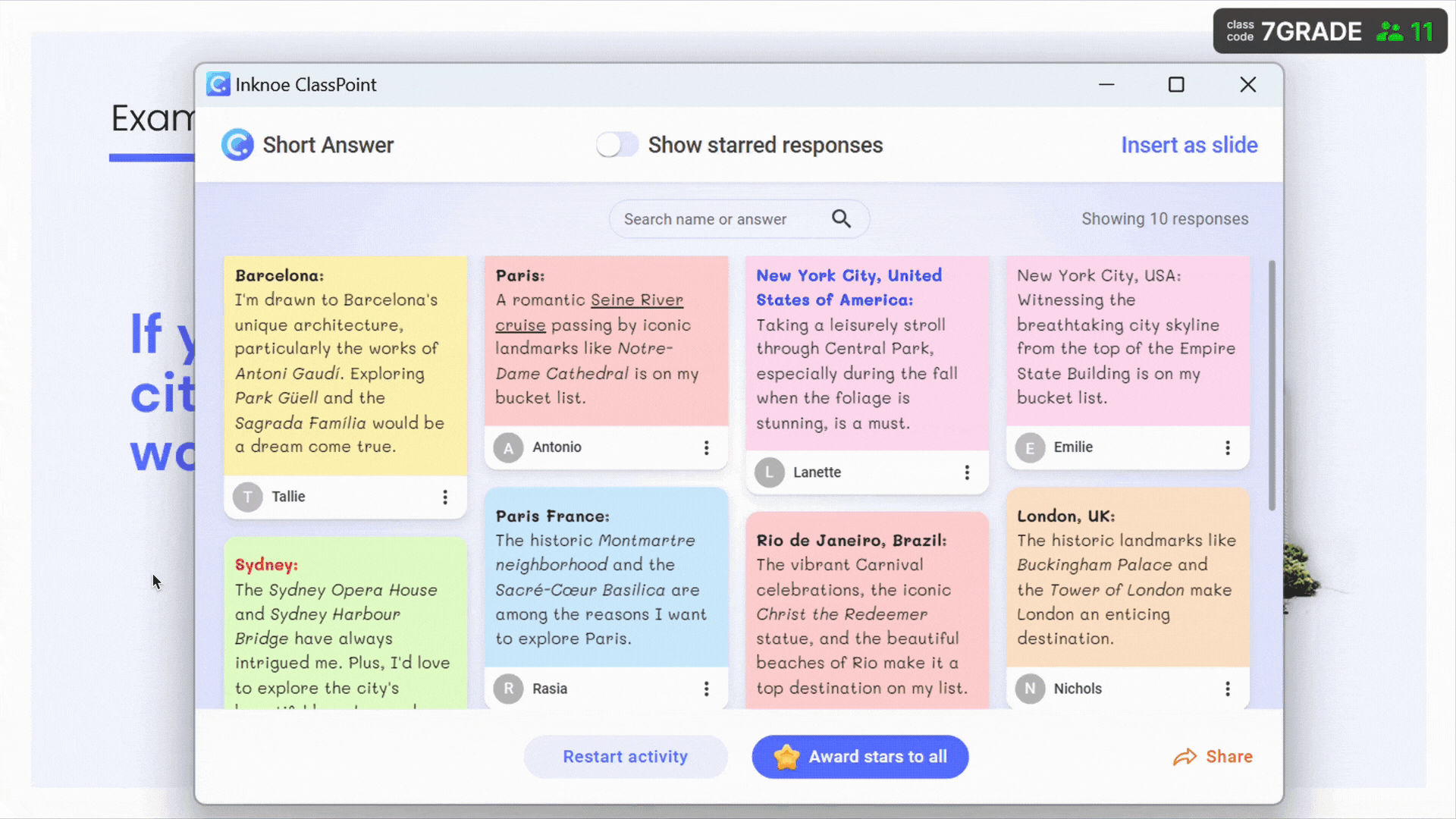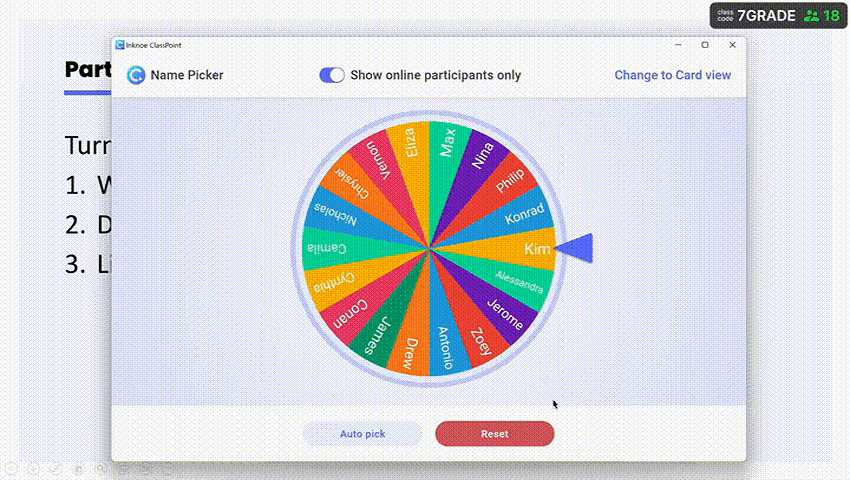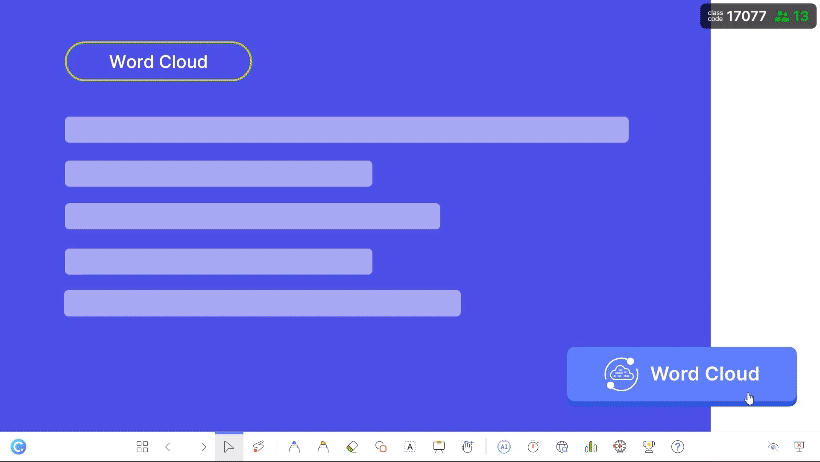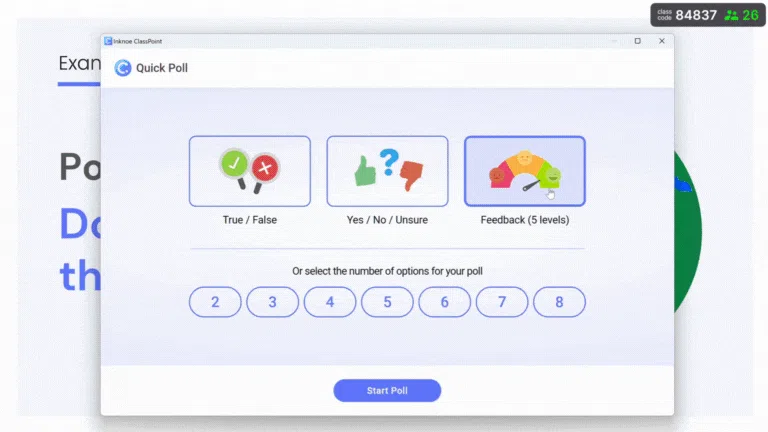Humans are wired to connect. In every zombie movie, characters always find a way to stick together. It’s a survival strategy. The same rule applies to us. When things get hard, we form groups, lean on each other, and figure things out. While your classroom (hopefully) isn’t under threat of a zombie apocalypse, the need for connection, collaboration, and mutual support is just as real.
In schools, students come in with different backgrounds, personalities, and moods. They won’t always click right away. That’s where team building activities come in. By bringing students together with a simple challenge or game, something magically shifts. Laughter breaks the ice. Awkwardness fades. And bonds start to build.
At their core, team building activities are about building collaboration. They give students the space to practice working with others, trusting each other, and handling challenges together. Curious what kind of impact this can really make? Let’s break down the benefits in the next section.
Benefits of Team Building Activities in the Classroom
Aside from developing and strengthening collaboration, team building activities are a practical way to help students build real-life skills while shaping a better classroom experience. When used with intention, these activities can change how students interact, learn, and show up every day. Here’s how they help:
- They build communication skills: Students get the opportunity to talk, listen, and figure things out as a collective. As Sara Keinath, youth leadership educator at Michigan State University, explains: “Guiding group members through intentional games can help them improve their communication skills with each other, which will transfer to their work or club projects later. Many team-building activities incorporate such skills as active listening, questioning assumptions, giving clear directions, problem-solving, or learning how to ask effective questions.”
- They help build trust and relationships: When students play or work toward a common goal, it breaks down walls. Slowly, trust forms. And once that happens, collaboration feels easier and the classroom starts to feel more connected.
- They teach collaboration and problem-solving: Usually, team building activities involve challenges that require teamwork. It’s a hands-on way for students to learn how to share responsibility, think creatively, and get better at working through problems as a group.
- They support social-emotional learning: These activities naturally build SEL skills. Students get the chance to practice empathy, learn how to navigate group dynamics, and become more aware of themselves and others without it feeling like another mandatory chore or lesson.
- They improve classroom culture and morale: A classroom that laughs, learns, and solves things together feels different. As a result, students are more likely to take part, support each other, and feel like they belong. And that shift matters.
- They build leadership and ownership: Team building activities create space for students to take the lead, help their peers, or step up in their own way. It’s a low-stakes setting where confidence and responsibility can take space to grow and thrive.
Now that we’ve seen the impact, the next question is: what kind of team building activities actually work in the classroom? Let’s look at a few ideas that are easy to run, fun for students, and packed with purpose.
15 Team Building Activities Students Actually Enjoy
Team building activities aren’t just about getting students to group and work together. It’s about building trust, listening skills, and collaboration in natural, and not forced ways.
We’ve compiled a balanced mix of active, creative, reflective, and academic activities. These are classroom-friendly ideas that students actually enjoy and that teachers can run with ease. Let’s walk through them one by one below.
| Activity | What It Builds | How It Works |
|---|---|---|
| Mystery Drawing Pairs | Active listening, communication, creativity | One student describes a mystery image, the other draws. Then they switch roles. |
| If You Build It | Team planning, problem solving, collaboration | Teams use limited materials to build the tallest or strongest structure. |
| Classroom Escape Box | Critical thinking, teamwork under pressure | Teams solve subject-based clues to “escape” a classroom challenge. |
| Would You Rather Wall Walk | Discussion, perspective-taking, movement | Students pick a corner to match their choice and discuss with the group. |
| Common Thread Challenge | Relationship building, identity, collaboration | Groups find one thing they all share and create a group name around it. |
| Story Circle | Creativity, listening, group participation | Each student adds a sentence to build a class story, spoken or written. |
| Paper Chain Goals | Reflection, goal setting, class unity | Students write goals on paper strips, link them into a shared chain. |
| Team Art Mural | Shared ownership, creativity, thematic thinking | Each group decorates part of a poster that connects to a class theme. |
| Puzzle Race | Turn-taking, strategy, verbal coordination | Teams complete a puzzle by taking turns placing one piece at a time. |
| Hot Seat (Academic Edition) | Content review, vocabulary, quick thinking | One student guesses the term behind them based on clues from the class. |
| Silent Debate | Opinion sharing, respectful disagreement | Students write opinions on a prompt and respond to others’ ideas silently. |
| Walk and Talk | Social bonding, active reflection | Students pair up and discuss a prompt while walking. |
| Team Trivia Challenge | Collaboration, recall, healthy competition | Teams answer content-based trivia questions under time pressure. |
| Build a Business | Planning, creativity, presentation skills | Groups create a mock business with a budget, logo, and pitch. |
| Rose, Thorn, Bud Check-In | Emotional awareness, reflection, connection | Students share a highlight, a challenge, and something they’re looking forward to. |
1. Mystery Drawing Pairs
Pair students up. One describes a picture without saying what it is. It could be a rocket, a treehouse, or a slice of pizza with legs. The other listens and draws based on the description. Then they switch. It’s quick, low-prep, and gets students thinking and listening closely.
2. If You Build It
Split students into small groups and hand out the same set of materials. Think paper, tape, string, straws, or even spaghetti and marshmallows. Then give them a simple challenge: build the tallest tower. Set a timer to keep the energy up.
It’s hands-on, a little messy, and full of moments where students learn by doing. They have to plan together, test ideas, adjust when things go wrong, and keep working as a team.
Putting students together in small groups can lead to better engagement. Here's our closer look on How Small Group Instruction Improves Learning and Drives Student Success.
3. Classroom Escape Box
Set up a mini escape room challenge using clues from your lessons. You can include math problems, vocabulary puzzles, science facts, or short reading passages. Students work in teams to solve each step and make their way through the challenge. It’s a fun way to mix learning with just the right amount of urgency and group problem-solving.
To make it more interactive, have students submit their answers using ClassPoint’s Short Answer Activity. You can track responses in real time and even reward correct answers and teamwork with stars to keep motivation high.
Here's a quick guide on how to Run Interactive Short Answer Questions to Transform your PowerPoint Presentations.

4. Would You Rather Wall Walk
Ask a few fun or thoughtful “Would You Rather” questions. Label the corners of your room with each option, such as Option A and Option B. Then have students walk to the corner that matches their choice. Once grouped, they chat about why they picked it.
You can keep it light with something like “Would you rather have a pet dragon or a pet dolphin?” or tie it into your subject with a question like “Would you rather visit ancient Egypt or ancient Rome?” After a few rounds, students start to loosen up, find common ground, and get curious about how others think. It’s an effortless way to get them moving, talking, and connecting without putting anyone on the spot.
Come check out our list of 165 Mind-Bending Would You Rather Questions for Students of All Ages.
5. Common Thread Challenge
Put students into small groups and ask them to figure out one thing they all have in common. It could be a shared interest, a food they all hate, or something totally unexpected. Once they’ve got it, have them come up with a group name based on that common thread.
To make grouping easier and fair, use ClassPoint’s Name Wheel Picker. It randomly selects students in batches of up to 10, so you can skip the guesswork and get straight to the fun part. It’s a quick method to break the ice and help students connect without the pressure.

6. Story Circle
Kick things off with one sentence to start a story. Then go around the circle with each student adding their own line to keep it going. The story can go in any direction, which is part of the fun. You can also try a written version by passing around a paper or slide, letting students build the story sentence by sentence.
This activity is great for creativity and listening. Everyone gets a turn, and you’ll be surprised by where the story ends up. It’s light, low-pressure, and brings out a lot of laughter, especially when the twists take unexpected turns.
7. Paper Chain Goals
Give each student a strip of paper and have them write down one personal or academic goal. Then link them all together to form a class goal chain. Hang it somewhere visible so students can see their individual goals as part of something bigger.
It’s a simple way to show that growth is happening across the board. Students can set intentions, reflect, and see how their goals connect to the class community. Plus, it makes for a great visual piece that grows with them throughout the term.
8. Team Art Mural
Split students into groups and give each group a section of a larger poster or paper. Each section should connect to a central theme—maybe a character study, a historical moment, or a class value. Once all teams finish, bring the sections together to create one big mural.
This activity works for just about any subject and gives students a chance to be creative while working as a team. Each student’s piece matters, and when it all comes together, it shows what collaboration can look like. It’s a win for both expression and shared ownership.
9. Puzzle Race
Give each team a small puzzle to complete. This can be a jigsaw puzzle, a cut-up image that ties into your lesson, or a word puzzle. Each team member can only take one piece at a time and must take turns placing it.
It’s a fun mix of focus, teamwork, and strategy. Students have to communicate clearly, stay organized, and rely on one another to finish the puzzle before time runs out or another team completes theirs first. It’s low-prep and no hassle to run while still encouraging solid collaboration.
Here's our free Interactive PowerPoint Puzzle Template and Tutorial in 5 Simple Steps.
10. Hot Seat (Academic Edition)
Pick one student to sit facing the class with their back to the board. Write a key word or concept behind them that ties into your lesson. Then run ClassPoint’s Word Cloud activity, where the rest of the class submits words or clues related to the answer. These appear on the slide as a web of hints for the student to figure it out.
It’s an easy way to review content and check for understanding while keeping things interactive. Plus, it gets students thinking quickly and encourages the class to explain ideas clearly. Keep the pace fast so everyone gets a turn in the hot seat.

11. Silent Debate
Put up a thought-provoking question on your slide. Choose something open-ended that encourages a range of opinions. Have students take a minute to reflect, then submit their responses using ClassPoint’s Short Answer tool. Once everyone has shared, launch a Quick Poll so they can react to their classmates’ responses by choosing agree, disagree, or neutral.
This activity gives all students a chance to participate, especially those who prefer not to speak out loud. It creates space for slower, more thoughtful reflection and helps students get comfortable with different points of view. Over time, they learn how to express their ideas clearly and respond to others with curiosity and respect.

To help spark inspiration, here are 70 Thought-Provoking Debate Topics for Students in Different Categories That Cover the Most Important Issues of Our Time.
12. Walk and Talk
Pair students up and give them a question to discuss while walking around the school or classroom. The prompt can be academic, personal, or just fun. Try questions like “What’s a book you actually enjoyed?” or “If you had a superpower, what would it be?”
The movement helps reset energy, and the one-on-one format makes it easier for shy students to open up. It’s a simple but effective way to build a connection and get students talking without the pressure of the whole class listening.
13. Team Trivia Challenge
Split students into small teams and run a trivia-style game using either general knowledge or content from your current lesson. Set a timer for each question so teams have enough time to huddle, talk it out, and submit their answers using ClassPoint’s Short Answer feature.
To keep the energy up, show the leaderboard ranking either just for the day or track it over time for an overall score. You can also let students level up by earning badges based on their performance or participation. It’s a fun way to review material while building collaboration and friendly competition.

Get ahead with a ready playable trivia-style game by checking out our Free PowerPoint Trivia Template in Different Difficulty Levels.
14. Build a Business (Mini Project)
Give student teams a pretend budget and challenge them to create a business idea. They need to come up with a product, a name, a logo, and a short pitch. When they’re ready, have them present to the class in a “Shark Tank” style.
This project helps students practice planning, public speaking, and working as a team. It’s also a fresh way to tap into their creativity and let them take charge of a full idea from start to finish.
15. Rose, Thorn, Bud Check-In
Ask students to share a rose (something good), a thorn (something challenging), and a bud (something they’re looking forward to). This can be done in a circle, in pairs, or even written down and shared anonymously.
It’s a quick way to build emotional awareness and create space for reflection. You can do this weekly or whenever your class needs a calm, grounding moment.
Bottom Line: Whether It’s a Zombie Apocalypse or Group Work, We’re Built to Work Together
Whether it’s in movies or real life, we thrive by leaning on each other. Thus, team building activities are more than just something extra. They help students build trust, connect with one another, and work through challenges as a team.
Collaboration doesn’t end in the classroom. It’s part of everyday life: from group work and careers to friendships and family. No one gets through things in isolation. Most wins happen when someone shows up to help, support, or walk alongside us.
When students team up to solve a problem, they’re doing more than completing a task. They’re learning to listen, empathize, and build a sense of belonging. If you want to help them grow not just academically but socially, make space for intentional team building activities. It’s one of the simplest ways to prepare them for what comes next.
FAQs
What are team-building activities, and why are they important in the classroom?
Team building activities are structured group tasks that help students build trust, improve communication, and develop collaboration skills. In the classroom, they support a positive learning environment and help students feel more connected to their peers.
How often should I include team building activities in my lesson plans?
You can include team building activities weekly, biweekly, or anytime you notice a dip in classroom morale or group dynamics. Even short 10-minute activities can make a big difference in building class connection and teamwork.
Can team building activities work for older students or only younger grades?
Team building activities can be adapted for all grade levels, from elementary to high school. The key is to choose age-appropriate tasks that align with students’ interests and encourage meaningful collaboration.
What are some easy team building activities to start with?
Some easy team building activities include Mystery Drawing Pairs, Would You Rather Wall Walk, and Team Trivia Challenge. These require little prep and help students practice listening, problem-solving, and teamwork.
How do team building activities support academic success?
Team building activities promote communication, problem-solving, and collaboration—all of which are essential skills for group projects and classroom discussions. When students feel connected, they participate more and are more willing to help and learn from one another.

